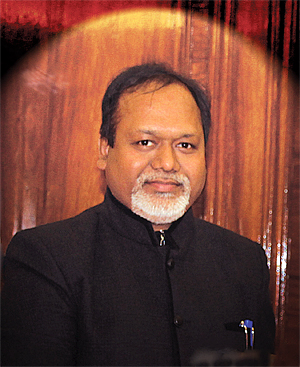INDIAN ARMED FORCES CHIEFS ON OUR RELENTLESS AND FOCUSED PUBLISHING EFFORTS

SP Guide Publications puts forth a well compiled articulation of issues, pursuits and accomplishments of the Indian Army, over the years

"Over the past 60 years, the growth of SP Guide Publications has mirrored the rising stature of Indian Navy. Its well-researched and informative magazines on Defence and Aerospace sector have served to shape an educated opinion of our military personnel, policy makers and the public alike. I wish SP's Publication team continued success, fair winds and following seas in all future endeavour!"

Since, its inception in 1964, SP Guide Publications has consistently demonstrated commitment to high-quality journalism in the aerospace and defence sectors, earning a well-deserved reputation as Asia's largest media house in this domain. I wish SP Guide Publications continued success in its pursuit of excellence.
A word from Editor-in-Chief

As the IAf has introduced a slew of carefully crafted measures, Accident rates during the year gone by was just 0.22 per 10,000 hours of flying. This accident rate is not only the lowest ever recorded in the IAF, but is also comparable to the most advanced air forces of the world.
While the major economies of the world including India, are grappling with the global economic slowdown and are exploring ways and means to recover from the malaise, the world is suddenly confronted with a new crisis and an ominous one at that, of the looming threat of war on the Korean peninsula. What adds a completely new dimension to the situation is the possibility of the use of nuclear weapons by North Korea against its industrially well developed neighbours, South Korea and Japan, thus possibly drawing Washington into the conflict. In the event of North Korea launching missiles armed with nuclear weapons, the possibility of nuclear retaliation by the US would be high and near total destruction of North Korea a certainty.
The US B-2 bombers have already registered their presence in the Korean skies. In the event of the US joining the conflict, China is unlikely to remain a bystander. The consequences of this part of the world being drawn inadvertently into a full-scale nuclear war are far too horrendous even to be imagined. Hopefully, saner counsel will prevail, the belligerent sabre-rattling by North Korea will subside and the anniversary on April 15, 2013, of the birth of the nation’s founder Kim Il-Sung, the grandfather of the current leader Kim Jong-un will pass off peacefully, letting the rest of the world sleep in peace. Read more about this conflagration in the next issue of SP’s Aviation.
In the first part of his article in this issue, aptly entitled Mother of All Programmes, Air Marshal (Retd) Anil Chopra traces the origins and the progress of what can be described as the most complex programme in the history of development of a combat platform, the F-35 Lightening II joint strike fighter (JSF) with variants for the US Air Force, the US Navy and the US Marine Corps. Air Marshal Chopra also focuses on the achievement by the Indian Air Force (IAF) in reining in the flying accident rate during the year gone by to just 0.22 per 10,000 hours of flying through a slew of carefully crafted measures. This accident rate is not only the lowest ever recorded in the IAF, but is also comparable to the accident rates of most advanced air forces of the world. Undoubtedly a remarkable achievement. Air Marshal (Retd) B.K. Pandey provides an overview of the comprehensive modernisation programme that is under way in the IAF. He highlights the fact that as the indigenous aerospace industry has not been able to deliver, in the interest of national security, the IAF is left with no option but to depend on foreign sources for the latest generation of hardware which invariably comes at exorbitant cost. Writing from Goa, Joseph Noronha finds it difficult to predict with any certainty the character of future battlefields except that unmanned aerial vehicles, both armed and unarmed, will definitely play an increasing role, especially in South East Asia.
In the civil aviation segment, R. Chandrakanth explores the dream world of high-end business jets and observes that despite the global economic uncertainty, the market for this category remains strong. Even the business tycoons in India are not lagging behind in this race. Embraer has successfully forayed into Bangladesh with their E-jets through a private carrier Novoair, opening up new markets and opportunities in the region. On the subject of regional aviation in India, Joseph Noronha concludes that the dream of providing air connectivity to the neglected population centres will remain as distant as ever unless there are dedicated low-cost regional airports in the right numbers and locations.
All these apart from the regular features in this issue. Welcome aboard and happy landings!





